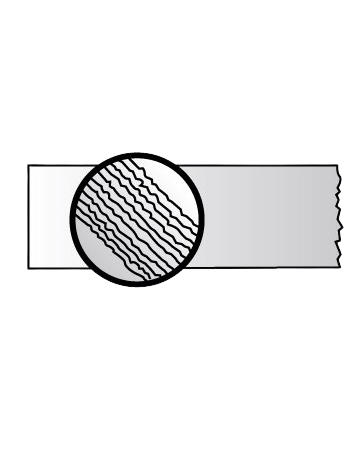
Achieving a smooth and accurate cut on a bandsaw is essential for both amateur and professional woodworkers. However, a number of critical factors can lead to rough, wavy, or inconsistent cuts. Careful attention to each of these aspects is necessary to rectify the issue and maintain optimal cutting performance. Below are the main factors, explained in detail:
1. Tooth Count
The tooth count, usually measured in teeth per inch (TPI), plays a significant role in the finish quality produced by the bandsaw. When the tooth count is too low for the material being cut, the blade removes material too aggressively, resulting in a coarse and uneven surface. Conversely, a blade with too many teeth may not cut efficiently in thicker workpieces, causing burning and roughness due to clogged gullets. Selecting a TPI that matches the thickness and type of material is crucial to obtaining a smooth cut [source].
2. Tooth Set
The tooth set refers to how the teeth are bent outward, left and right, to create a kerf wider than the blade body. This prevents binding in the cut. If the tooth set is uneven or inadequate, the blade is more likely to wander or pinch, causing roughness or even burnished lines along the cut edge. Maintaining a correct and consistent tooth set is key to a smooth finish and minimizing blade vibration [source].
3. Tooth Shape
Various tooth shapes (regular, hook, skip, etc.) are designed for different materials and applications. The wrong tooth shape for the material can increase vibration, cause chip buildup, and result in ragged or rough cuts. For example, a skip-tooth blade might be best for softer woods, while a hook-tooth blade is more aggressive and suited to thicker or harder stock. Matching the tooth shape to the job delivers cleaner, smoother results [source].
4. Guides Not Set Properly
Blade guides are responsible for keeping the blade tracking straight and preventing lateral movement. If the guides are set too loose or too far from the blade, the blade can twist or wander, manifesting as rough, wavy, or “pulsing” cuts. Excess pressure from guides can also induce extra friction and heat, contributing to poor finish. Regularly checking and precisely setting your bandsaw’s guides is critical for achieving smooth cuts [source].
5. Tension
Blade tension is perhaps one of the most crucial but overlooked aspects of bandsaw operation. If the tension is too low, the blade will not track properly, resulting in erratic, jagged cuts. Over-tensioning, on the other hand, can stress the blade and machine, leading to premature blade wear or breakage and rough finishes. Tension should be set according to the blade size and type, and manual checking is recommended over relying solely on the saw’s built-in scale, as these are often inaccurate [source].
6. Dull Blade
A dull blade is less able to slice cleanly through the material, causing more friction, heat, and ultimately, rough or burned cuts. Dullness also increases the risk of blade wandering and can make the cutting experience more unpredictable, sometimes resulting in damaged workpieces and additional strain on the machine. Regular inspection and timely replacement or sharpening of blades are necessary to ensure cut quality remains high [source].
7. Feed Rate
Feed rate—the speed at which the workpiece is pushed into the blade—must be calibrated based on the blade type, material, and thickness. Pushing the material through the blade too quickly creates excessive heat and vibration, leading to rough, chipped, or uneven cuts. Feeding too slowly can cause burning, excessive blade wear, and rough finishes as well. Operators must learn to “let the blade do the work,” feeling for resistance and making adjustments as needed for smoother results [source].
Conclusion
In summary, rough cuts on a bandsaw are not the result of a single issue, but rather a combination of factors that can individually or collectively undermine cut quality. Addressing tooth count, set, and shape; ensuring guides and tension are set correctly; using sharp blades; and maintaining a proper feed rate are all essential steps for producing clean and precise cuts. Regular maintenance and mindful operation not only improve the finished result but also extend the life of both your blades and your bandsaw